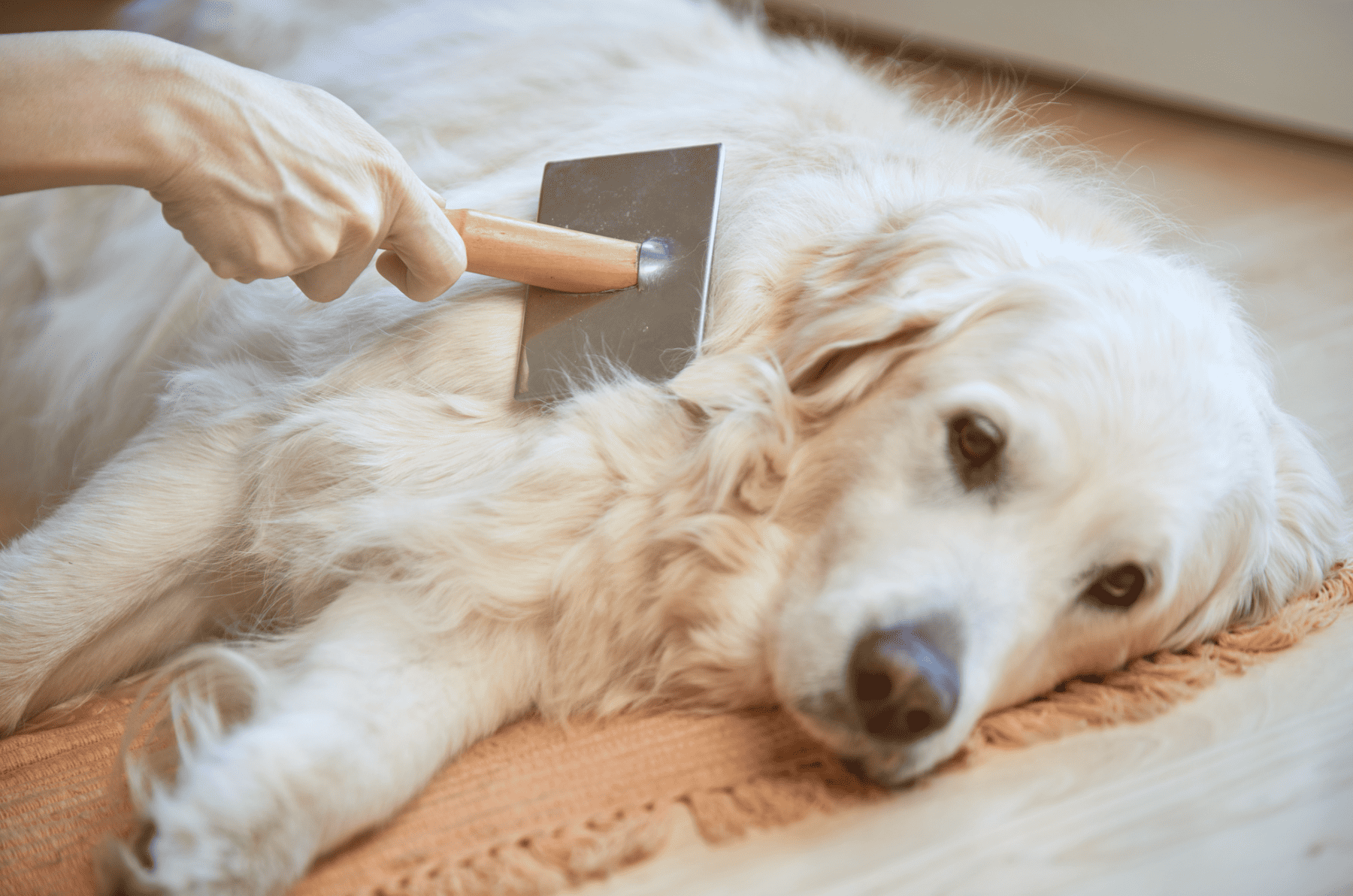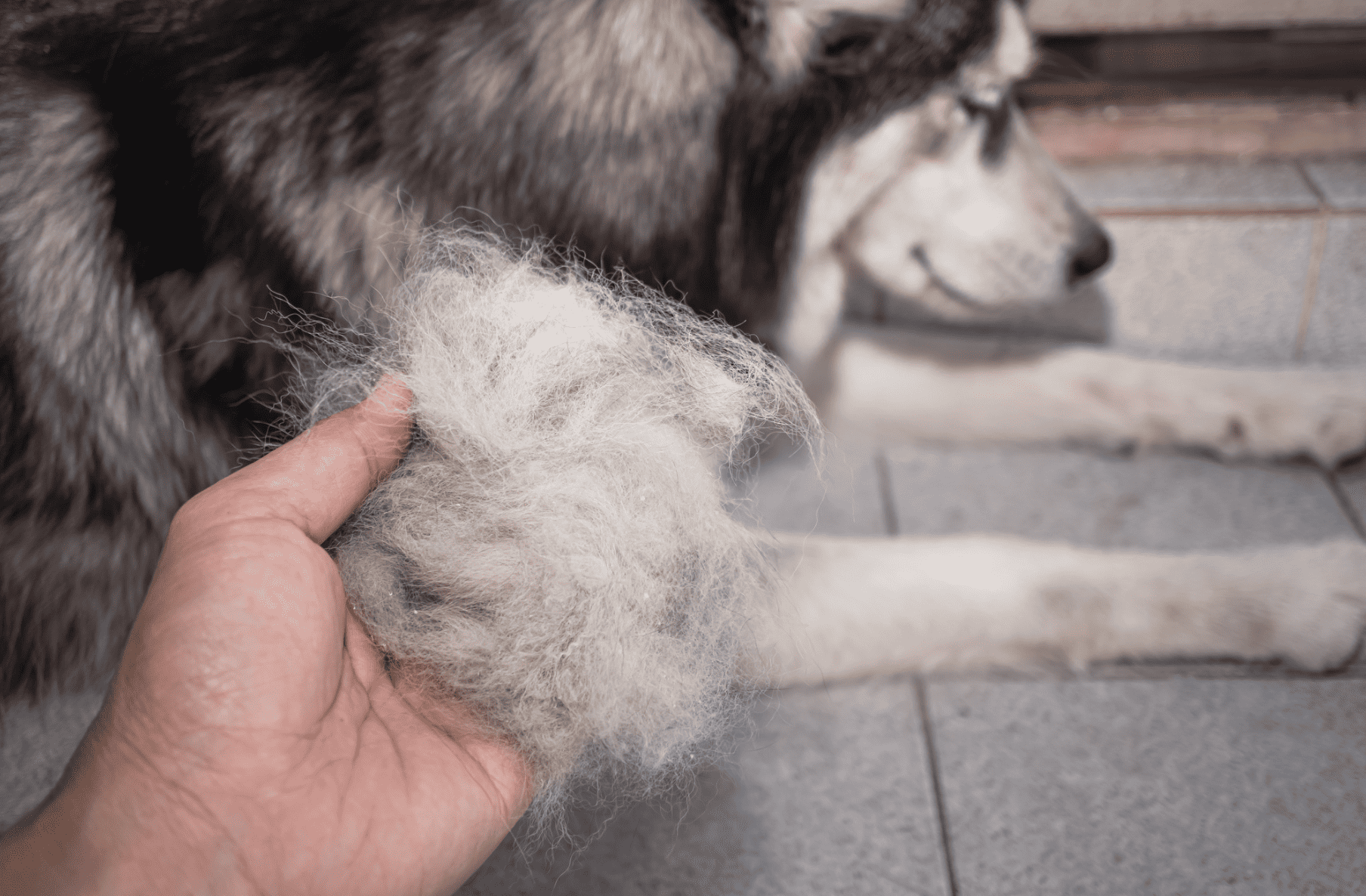Dogs are an important part of many households, and one of the most common concerns among pet owners is shedding. It can be challenging to control and lead to fur buildup in carpets, furniture, and clothing. Fortunately, there are a variety of steps you can take to reduce shedding in dogs.
This article will explore the factors that influence dog shedding, the breeds that generally shed less, and the various tools and techniques available for minimizing excessive shedding.
Factors Influencing Shedding
Shedding in dogs is a natural process that you can manage with various strategies. Here are some significant factors you should consider when attempting to reduce shedding:
- Diet
Optimal nutrition is essential in managing canine shedding, as a balanced and healthy diet can help nourish the skin and fur. To ensure that your dog receives adequate nutrients for their shedding needs, you can follow these tips:
- Feed them a high-quality diet for their breed, age , and activity level. You can also get express delivery frozen raw dog food as a healthy alternative.
- 2. Include whole food ingredients like fruits, vegetables, proteins, and fats to ensure they get all the necessary vitamins and minerals.
- Supplement with omega-3 fatty acids to improve coat texture and decrease excessive shedding.
- Ensure they drink plenty of water throughout the day to stay hydrated.
- Following these tips can help your dog maintain a healthy coat and reduce excessive shedding.
- Genetics
Genetics plays a significant role in the composition of canine coats and associated shedding tendencies. Different breeds of dogs have different coat types, primarily determined by their genes. For example, double-coated breeds such as German Shepherds and Siberian Huskies will shed more than smooth-haired or curly-haired breeds like Greyhounds and Poodles.
Additionally, certain coat colors come with specific shedding patterns; brindle coats tend to shed less, while lighter-colored ones may shed more. Knowing what genetic factors contribute to your dog’s type of fur can help you better anticipate and manage its shedding habits.
- Breed
The canine breed is crucial to consider when managing their shedding levels. Dogs with single-layer coats, such as the Afghan Hound, Bichon Frise, Chinese Crested, and Maltese, shed less than those with double-layer coats. Some breeds, including the Schnauzer, Poodle, and Portuguese Water Dog, are bred specifically for low shedding levels.
You can do other things besides selecting a low-shedding dog breed. Regular brushing with the right brush for your pet’s fur type can help remove dead hair before it falls onto furniture or clothing.
- Environment
Environmental factors can also influence a canine’s coat composition and associated shedding levels. Certain environmental conditions, such as humidity, temperature, and air quality, can affect how much fur a dog sheds. Dogs with single-layer coats tend to shed more than those with double-layer skins in areas with high temperatures and humidities.
Cold weather and low humidity cause dogs to shed less due to their fur being unable to retain moisture and keep them warm. Proper ventilation is vital for all breeds as it helps reduce allergens contributing to dander buildup in the environment.
Best Practices To Control Shedding
To help reduce dog shedding, here are some best practices you can implement at home:
- Nutrition And Supplements
Proper nutrition and supplementation can aid in maintaining healthy fur growth and reduce the amount of shedding. A good diet for your dog should include a balance of proteins, carbohydrates, fats, vitamins, minerals, and water to ensure they receive all the essential nutrients they need.
- Brushing And Grooming
Regular brushing and grooming can help to maintain the overall health of a dog’s skin and coat. Regularly brushing the coat with a brush suitable for their fur type will help reduce shedding by removing dead hair before it can fall out. It can stimulate natural oil production, which helps keep the coat shiny and healthy while also helping to spread essential oils throughout.
- Bathing And Drying
Bathing is integral to a dog’s grooming routine and can help keep their coat looking and feeling its best. It removes dirt, debris, and oils from the coat and helps reduce shedding by removing dead hair before it falls out. Additionally, bathing with a de-shedding shampoo can help ease shedding.
After bathing your dog, it’s vital to thoroughly dry them with either a towel or blow-dryer in a low-temperature setting so they don’t get chilled while wet.
- Cleaning And Vacuuming
Regularly vacuuming the house can help minimize the amount of fur accumulating on furniture, carpets, and other surfaces. Vacuums that pick up pet hair are more effective than those that remove dead hair from carpets and upholstery.
Using lint rollers or rubber gloves to remove pet hair from these surfaces can also be beneficial. Pet owners should also consider washing their dog’s bedding regularly with hot water to kill bacteria and reduce odors associated with shedding fur.
- Reducing Stress
Reducing stress can be beneficial in managing the amount of fur shed by a dog. Stress affects the production of cortisol and other hormones, which can cause excessive shedding.
A few ways to help reduce your dog’s stress include:
- Providing comfort items like blankets or beds.
- Regularly taking them out for daily walks.
- Playing interactive games like fetch.
- Providing mental stimulation with toys.
- Engaging in positive reinforcement training techniques.
- Limiting exposure to loud noises.
- Allowing them plenty of time each day for restful sleep.
Conclusion
Overall, managing shedding in dogs is an achievable goal with the right tools and techniques. Regular brushing and grooming help to remove excess fur while promoting healthy skin and coat. Additionally, selecting a breed that sheds less or uses de-shedding products can reduce shedding.
Thus, maintaining a proper diet for your dog will ensure its coat remains healthy and vibrant over time. By understanding the factors that influence shedding and taking the appropriate steps to manage it, pet owners can keep their furry friends looking great for years.


